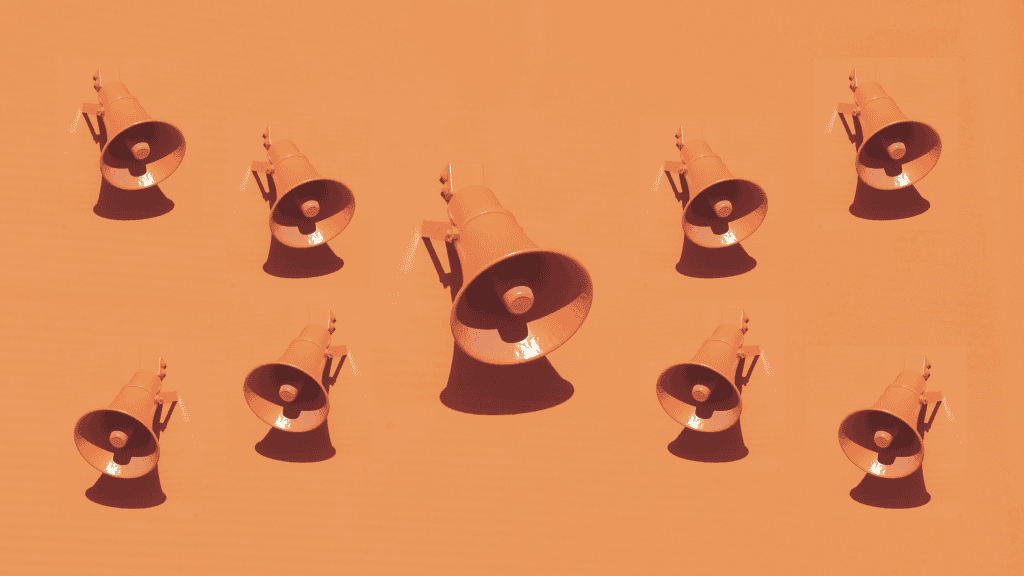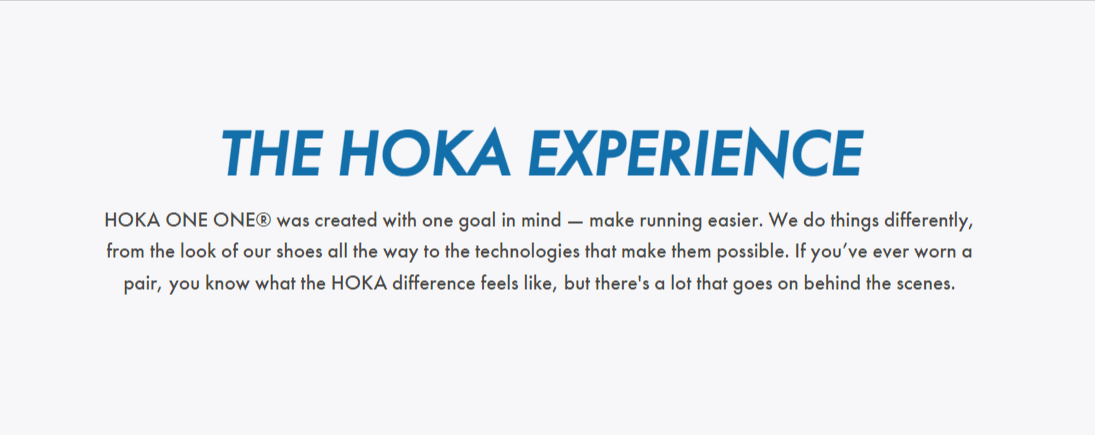30 minutes to optimized brand messaging
Apr 1, 2023
Published by: Sean McCarthy

Every company has a series of statements they make when describing their products or services. Whether consistent or inconsistent, powerful or bland, these statements represent that brand’s key messages.
Some brands stumble into their core messaging over time while others spend a large amount of research arriving at what they believe to be the perfect way to attract attention and retain customers. It’s my belief you can go from next to nothing to a powerful framework for your brand’s messaging in 30 minutes.
Does that mean you can spend 30 minutes on this and be done forever?
Nope.
What this exercise represents is a way to think intentionally about your brand, why it exists and how you’ll speak about your offers across every marketing channel. It shouldn’t be the last time you ever consider your messaging--but rather a powerful first draft. A foundation on which you can build a world-class messaging framework.
What is brand messaging?
Brand messaging is the fundamental value proposition communicated in your content. It’s the way you explain, persuade and inspire your audience.
Your brand messaging is a substitute for the in-person conversations you’d have with each of your customers (and potential customers) if you were able to do that at scale. It impacts everything from how you direct your content creators and sales team to canned customer service responses.
Brand positioning vs messaging
A positioning statement, used internally, is how you want your audience to view your products or services. It’s a series of hyper-focused statements that formalize how your offer is better or different from the competition.
The brand messaging framework, then, is how you communicate your position. Key messages state your position using an on-brand tone of voice and then reinforce and clarify it through a set of proof points.
More on that later.
Characteristics of successful brand messaging
Successful brand messaging efficiently converts a complete stranger to a customer. But, what is happening behind the scenes that makes some messages more successful than others?
Think about your own experience comparing two similar brands. No matter how objective you think your decision was, messaging played a role.
How did the company frame its pricing options? Where did the website first mention its secondary features? What messaging pillars and media types did they leverage in their content?
This messaging example, from the innovative shoe brand Hoka One One, displays a high level of self-awareness and quickly lets the reader know their brand promise, going beyond simply producing running shoes. Publicly stating your brand story and values is a great message to get across, but be sure to balance them with more direct marketing language in pursuit of revenue.

Image source: Hoka One One
Powerful messaging avoids distracting fluff and jargon, doesn’t make assumptions about customer knowledge and avoids alienating the strategically-identified audience. For example, if you’re advertising SaaS tools, does your messaging reflect a positioning for enterprise-only, small business-only or all sorts of needs?
Give Lucky Orange a try with this free 7-day trial.
How to create a brand messaging flow that converts
[30-minute exercise]
For this exercise, open a word document or spreadsheet and grab a timer. Trust your instincts and know that what you’re working on is setting a foundation for long-term brand growth.
1. Refine your target audience (5 minutes)
While not a piece of messaging itself, if you don't know who you're talking to, your messaging can quickly become unspecific and bland. Even basic audience segmentation and prioritization can help.
For this exercise, answer the following questions:
Where does your audience prefer to get information about and buy your products or services? This might be blogs, review sites, YouTube or other social media or more traditional advertising sources.
What causes someone to want or need what you’re offering?
What 2-3 characteristics matter most about your audience for marketing purposes? Does a certain characteristic make someone eligible (or ineligible) for your offer? This could be age, location, household income or existing product ownership.
2. Identify the top 2-3 problems you solve for your audience (5 minutes)
Without going into too much depth, let’s talk about the problems you’re solving. Are you handling an activity your audience doesn’t want to do? Or is it something the average person can’t reasonably accomplish?
Does your product bring a unique approach to a widely accepted problem or need? Is your pricing a differentiator?
For this exercise, provide a few answers the following question:
Which wants or needs does your product fulfill for your audience? Note whether you think each is a want or a need as this can change how you speak to them.
3. Determine how your product/service helps the target audience solve their problem (5 minutes)
Now that we know the problem you’re solving, let’s take a quick look at how you’re accomplishing this feat. Typically, businesses ask how their service makes the customer feel better about themselves or how it allows them to be better at their job.
Before answering this question, consider how you’d speak to your audience in person. Would it be super formal and professional? Would you be edgy or insert relevant humor?
In this example, Shift4Shop supports its main messaging by layering in its powerful integration network. It’s a straightforward statement that lets the visitor know no business need is too big for Shift4Shop.

Image source: Shift4Shop
For this exercise, answer the following question for each problem listed in step two:
In words you’d use in a face-to-face conversation with your audience, how do you solve their problem or bring value to their life?
4. Formalize the "one thing" you want people to remember (5 minutes)
With attention spans getting smaller and smaller, it’s vital you can catch someone’s attention whenever you’re communicating. From stopping someone scrolling through social media to getting an email open and click, we need to figure out the most important thing you need your audience to remember about your business.
In this case your “one thing” shouldn’t be that you exist or that you offer the products in your store. It should be what makes you stand out from the crowd. This is the thing you want to be known for when your best customers start spreading the word.
For this part of the exercise, answer the following question in one short statement. Again, try to use language you’d use when speaking to potential customers in person.
When making a first impression on a new visitor, what’s the most important thing they need to know about your brand?
5. Explain the "one thing" in a short sentence (5 minutes)
Let’s take it a step further and explain why your business cares about this “one thing.” This can be a corporate social responsibility, recognizing the need for a better solution to the problem at hand or even just a more in-depth description of what you mean by the “one thing” if it’s a complicated topic.
For this exercise, write a quick sentence on the following:
Describe why the “one thing” matters to your business and how you hope it helps the customer.
6. Provide 2-3 details for someone who wants to know more (5 minutes)
You guessed it, it’s time to provide more detail. If it’s been difficult to describe what you’re talking about so far, here’s your chance to add in those vital details. Think of this as your elevator pitch aligned with the “one thing” and other statements you’ve already made above.
For this exercise, write out your elevator pitch using the key messages formalized in the previous steps.
What to do next
By the time you finish this exercise, you should have identified the most important thing you're trying to communicate with your audience, details to support that point, and how your brand solves specific problems for your target audience.
With this information in hand, it's time to apply the messaging across your marketing channels, website, and email. Delivering a cohesive set of messages on a consistent basis is the best way to upgrade your customer experience through the entire conversion funnel.
Updating messaging over time
Whether you’re creating your brand’s message for the first time or are optimizing a long-standing strategy, data plays a role. This can be as simple as insights gained from customer surveys about their pain points. It can be as complex as years of landing page tests, market analyses and 3rd-party research.
While you don’t want to make major changes to messaging on a regular basis, small tweaks to support points can be really valuable. You’ll also want to consider how you incorporate new products and features in your messaging. How can you tie together your top-line messages with your new offer? How does this new element support your broader goals?
Regardless of your long-term approach, the exercise detailed above can get you on the right path to excellent messaging.




